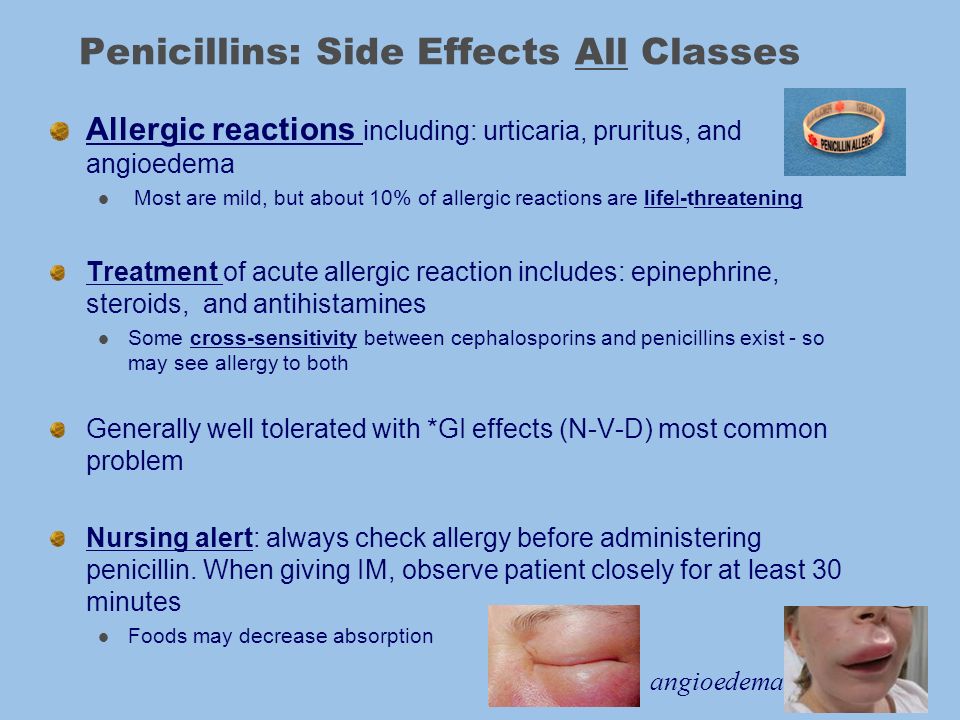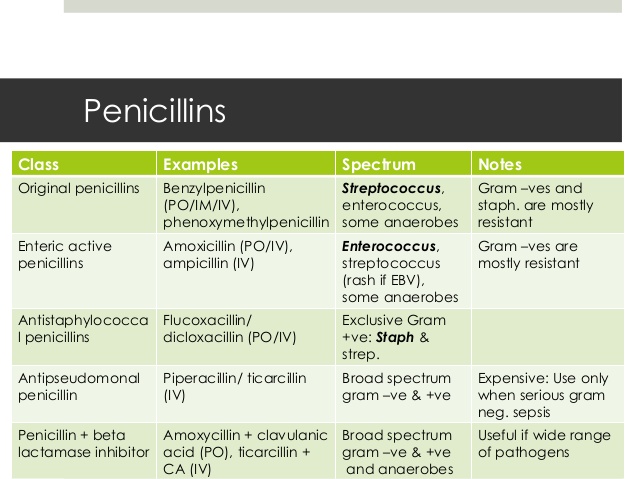The basic structure of the penicillins consists of a thiazolidine ring, the beta-lactam ring, and a side chain.
The beta-lactam ring is essential for antibacterial activity.
The side chain determines in large part the antibacterial spectrum and pharmacological properties of a particular penicillin.
The rapid emergence of bacteria, particularly Staphylococcus aureus, that produce beta-lactamases (penicillinase) has been partly countered by the development of compounds that resist hydrolysis by beta-lactamases and compounds that are more active than penicillin G against Gram-negative species.
This has led to the production of many semisynthetic penicillins, the first of which was meticillin, active against beta-lactamase-producing S. aureus; followed by ampicillin, active against selected Gram-negative bacilli; carbenicillin, which has activity against Pseudomonas aeruginosa; and subsequently many agents with different pharmacological and antimicrobial properties.
Another method of combating beta-lactamase-producing organisms has been the development of beta-lactamase inhibitors. Clinical experience with penicillins, especially penicillin G and the aminopenicillins, is extensive. These substances are rarely toxic, even when they are given in an extended range of dosages, making them invaluable for use in pregnant women and children. Their major limitation is their propensity to cause allergic reactions.
Use in non-infective conditions
In spite of the fact that most trials of antibiotics in pregnancy have shown that antibiotic administration prolongs pregnancy, the mechanism is unclear. However, it is well established that several antibiotics can alter intracellular calcium concentrations or inhibit some enzymes, including various phospholipases. It is also well established that bacterial products, such as phospholipases and endotoxins, can stimulate prostaglandin biosynthesis and release by the human amnion. Therefore, because prostaglandin biosynthesis depends on the action of phos-pholipase A2, a calcium-dependent enzyme, it has been hypothesized that antibiotics that interfere with phospholipase A2 might affect prostaglandin biosynthesis and release by the amnion. This hypothesis has been tested by evaluating the effect of ampicillin on the release of prostaglandin E from human amnion. The results were clear: ampicillin dose-dependently inhibited the release of prostaglandin E from human amnion in vitro. Moreover, ampicillin reversibly counteracted the rise in prostaglandin E induced by arachidonic acid or oxytocin. The authors concluded that inhibition of prostaglandin E release from amnion is a mechanism whereby ampicillin might prevent some cases of premature delivery, even in the absence of infection.
General adverse effects
Non-allergic reactions to penicillins occur mainly with high doses or are related to renal insufficiency. They consist of convulsions or electrolyte disturbances, with hyperkalemia or sodium retention. The penicillinase-resistant and broad-spectrum penicillins can cause specific adverse reactions. Leukopenia, agranulocytosis, liver damage, and some cases of nephropathy are considered to be due to toxic rather than to allergic mechanisms. Diarrhea is a common complication, whereas severe antibiotic-associated colitis is rare. Hypersensitivity reactions are of great importance and are dealt with in the post on beta-lactam antibiotics. They range from mostly harmless skin reactions to life-threatening immediate reactions, including anaphylactic shock, acute bronchial obstruction, and severe skin reactions. Tumor-inducing effects have not been described.
Penicillins: Organs and Systems
Second-Generation Effects
Teratogenicity
Early animal studies suggested that malformations could be caused by penicillins. However, this was not confirmed in later, more extensive evaluations. Penicillin G, ampicillin, and probably most other penicillins can be safely used in pregnant women and children. Experience with the newer semisynthetic penicillins is not extensive enough to allow definite conclusions regarding their safety for mother and fetus during pregnancy.

Fetotoxicity
Increased antenatal administration of ampicillin for the prevention of neonatal group B streptococcal disease may be responsible for the higher incidence of more severe neonatal sepsis with ampicillin-resistant non-group B streptococci, without a change in the overall infection rate.
Lactation
The transfer of penicillins (ampicillin, pivampicillin, phenoxymethylpenicillin) into the breast milk of nursing mothers with puerperal mastitis to the breastfed infant is minimal. The risk of adverse drug reactions due to penicillins is therefore negligible, unless the infant has penicillin allergy.

Susceptibility Factors
Renal disease
Toxic effects of penicillins can occur in patients with renal insufficiency if the dosage is not altered.
Other features of the patient
Toxic reactions can occur in patients with pre-existing cerebral damage or during cardiopulmonary bypass. Embolic reactions can have severe consequences in patients with pre-existing cardiac or pulmonary disease.






Thank you very much for this one. You have provided an nice article!